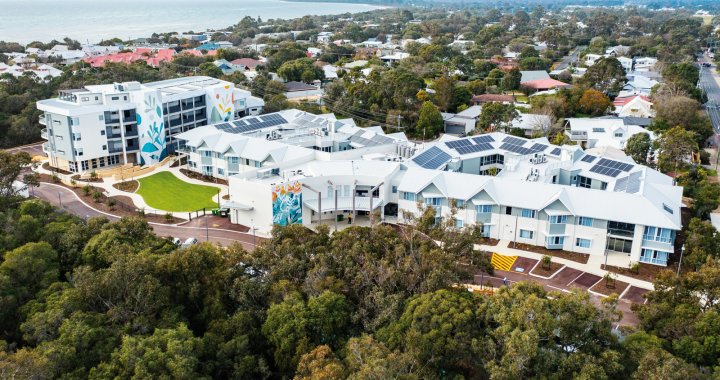
BlueScope has a long-standing commitment to developing innovative, responsible products and services that can help to address environmental issues such as Urban Heat Islands (UHIs).
“Urban Heat Islands are the most documented phenomenon of climatic change” - Scientia Professor Mattheos (Mat) Santamouris, Anita Lawrence Chair in High Performance Architecture at the University of New South Wales (UNSW) School of Built Environment.
Urban Heat Islands can form over time where vegetation is replaced with non-reflective, high mass, water resistant and impervious surfaces that absorb a high percentage of incoming solar radiation – our built environment. There are three main drivers of heat island formation: increased absorption and retention of heat due to decreased surface reflectance; reduced evapotranspiration due to decreased vegetation cover; and heating as a result of human activities.
The concept of UHIs has been well understood for decades and today, many cities and suburbs record air temperatures warmer than the surrounding natural land cover (Figure 1). Australia has warmed on average by 1.44 °C since national records began in 1910, with most warming occurring since 1950, and is getting increasingly hotter.1
Figure 1 - Urban Heat Island Profile (adapted from Reference 2)

While temperature spikes are readily observed in cities, they are not limited to busy urban centres. They can evolve around a single building, suburbs, or entire regions. Features of local and regional topography and climate – such as prevailing winds or seasonal rains – can also affect their strength and persistence.
The increased absorption of solar energy in high mass, often dark-coloured roofing materials can contribute to elevated local temperatures. Particularly in hot summers, this can impact thermal comfort, increase energy consumption, and drive peak energy demand.
Two of the key strategies for reducing the intensity and longevity of UHIs are evapotranspiration to cool the surface through latent heat loss (e.g., through urban forestry) and increasing surface reflectance to reduce the amount of solar energy absorbed and converted into heat (e.g., via cool roofs).
Cool roofs help reduce the intensity of UHIs, as well as help maintain thermal comfort which can minimise energy demand in buildings. Cool roofs have high solar reflectance and high thermal emittance. High solar reflectance means that less energy is absorbed into the roof initially, thereby reducing the amount of energy that can be converted to heat and re-radiated as longwave radiation. High thermal emittance means that any energy that is absorbed into the roof is re-radiated from the building quickly (again helping to increase thermal comfort and potentially minimising energy demand).
COLORBOND® steel cool roofing colours can help reduce the intensity and overall impact of Urban Heat Islands because they have high solar reflectance and high thermal emittance. A light coloured, low solar absorptance COLORBOND® steel roof not only reduces the amount of solar radiation absorbed but can also be very effective at reradiating heat. This means that the building can be cooler overall and may cool down faster when the sun is not shining, which can potentially help reduce energy demand.
Further information:
- Explore more of our cool roofing resources
- See the core range of COLORBOND® steel cool roofing colours
- The COLORBOND® steel Studio features additional cool colours that are available on special order
- Download the COLORBOND® steel cool roofing colours brochure
- Download Sustainability Technical Bulletin STB-2 - Urban Heat Islands and their Mitigation
- Are cool roofs the future for Australian cities? – University of New South Wales Newsroom
Reference notes:
- Commonwealth Scientific and Industrial Research Organisation (CSIRO). Australia’s weather and climate are changing in response to a warming global climate. Last Accessed 26 August 2022.
- US Environmental Protection Agency (2021). Learn About Heat Islands. Last Accessed 15 August 2022.


